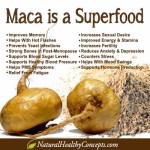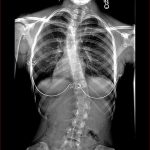The Linus Pauling Vitamin C Therapy for Heart Disease
“I recommend that every person who is at risk of heart disease should take 5 or 6 g of vitamin C and at least 2 g of lysine, although larger amounts may be necessary.” – Linus Pauling
The Pauling-therapy for heart disease works quickly. Patients have consistently reported symptom relief in ten days or less, even in advanced disease. The effect is rapid and undeniable, thus the reasons that most people haven’t heard about this are not based on science, rather financial
Then there are the drugs used to lower blood pressure and cholesterol — another growth industry. These drugs are also called “preventive care” even though there are studies showing that individuals treated with them have increased overall mortality and even though an entire class of blood pressure medications have been shown to increase the risk for heart attack. – Stephen Cherniske (DHEA Breakthrough.
The Pauling therapy is simple. Take high doses of two nutrients that are required for life. Doing so can prevent and even cure many forms of cardiovascular and heart disease – in days or weeks.
The exciting news for most heart patients, especially those diagnosed with severe heart disease and who are suffering heart pain, is that their symptoms can be reversed in as little as ten days by following Linus Pauling’s specific dosage recommendations. Results are dramatic, and if the person can be helped, they will know in a very short period of time — as long as they are compliant, that is, keep taking the correct high “Pauling” dosages.
Former severely ill patients begin feeling so well over time that they feel completely cured and stop taking their high doses of vitamin C. Stopping the Pauling therapy (high dose vitamin C and lysine) seems to invariably return the person to the condition they were in before starting the Pauling therapy, in about six months. We believe that the very high dosage can be lessened over time, but we don’t know by how much. It is clear that vitamin C should not be stopped altogether, and continuing high dosages is cheap “insurance.” (This problem should not be an issue for people taking these supplements for prevention and were feeling well to begin with.)
Vitamin E
Linus Pauling long recommended 400 to 800 iu of vitamin E for cardiovascular disease. Several authors have pointed to an extensive study conducted by the World Health Organization on thousands of men and women from sixteen nations. The study illustrated that a low level of vitamin E in the blood was more than twice as predictive of heart attack than either high cholesterol or high blood pressure. Inverse correlation between plasma vitamin E and mortality from ischemic heart disease in cross-cultural epidemiology.
Vitamin K
The Pauling (Vitamin C/Lysine) therapy does not immediately resolve hard calcified arteries. Vitamin K will do this job, and for this reason, we have long recommended supplementing the Pauling therapy with daily vitamin K.
The ability of vitamin K to act as a hormone moving calcium from soft tissue into bones is described in this year 2000 Life Extension Magazine report, largely based on research in Japan Life Extension Vitamin K Report
The following anecdotes illustrate a) vitamin C and lysine do not rapidly decalcify arteries, but b) adding vitamin K to the routine apparently will.
DHEA is another interesting piece of the cardiovascular puzzle, especially as we age. Most heart patients are over the age of 40 and, like most people in middle age, the blood levels of the anabolic steroid DHEA have declined steeply from youthful levels. There is a school of thought based on considerable research that balancing levels of this hormone to match levels of a 30-year-old will lead to significant health and longevity benefits.
Pauling Therapy.com
Vitamin C Foundation.org
Source:
http://www.paulingtherapy.com/







Leave a Reply